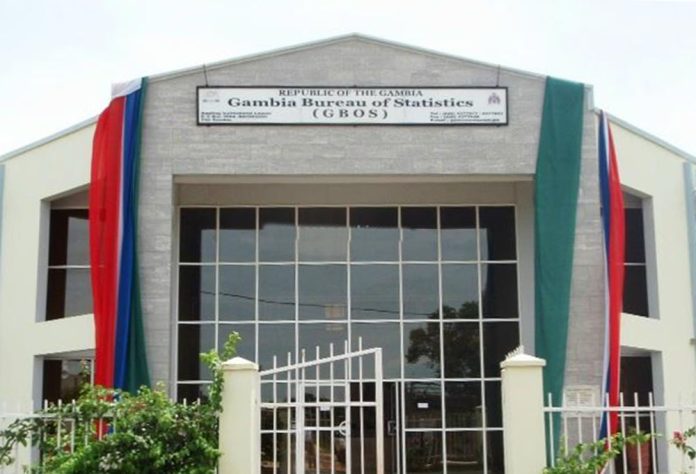Senegalese nationals, who make up 1.7% (40,849 persons) of the population, are the largest group of foreign residents in The Gambia, according to the preliminary 2024 population census. Guineans, who make up 1.5 percent of the population (36,077 persons), come next. Less than 1% of people are of other nationalities, such as Sierra Leoneans and Nigerians.
The Census Controller (Statistician General), who oversaw general coordination, fund disbursement, and resource management, oversaw the census. The Census Controller visited fields and collaborated closely with regional census officers. With one deputy census controller concentrating on administrative work and the other on technical execution, they provided assistance.
According to the data, the vast majority of people living in The Gambia are Gambians. At 1.7 percent (40,849), Senegalese nationals make up the largest group of foreign nationals, followed by Guineans at 1.5 percent (36,077). Less than 1% of people are of various nationalities, such as Nigerians, Sierra Leoneans, and others, according to the census.
The results of the census also showed that there are 2,422,712 people living in The Gambia, of which 49% are men and 51% are women. Along with Kanifing, Brikama is the most populated Local Government Area (LGA) in the nation, with 47.5% of the total population. These LGAs collectively account for 63.2% of the country’s population.
The population pyramid for The Gambia in 2024 has a wide base and a tapering top, suggesting a young population with a strong birth rate. Minimal sex imbalances are suggested by the comparatively balanced distribution between the sexes. According to the census, “focused investments in these areas will be crucial for addressing the associated challenges and capitalizing on the potential demographic dividend as this young population ages into the workforce.”
With 116 men for every 100 females, Banjul has the largest gender ratio and is home to a predominantly male population; Basse, on the other hand, has the lowest gender ratio, at 91. With 147,611 households (or 49.6% of the total) in 2024, Brikama will be the most populated LGA, followed by Banjul (5,551 homes; 1.9%), Kanifing (20.7%), and 61,586 households (20.7%).
The fast rise between 2013 and 2024 is the most noteworthy trend; it may indicate changes in household formation patterns or a quickly growing population. This upward trend illustrates how demand for housing and related services has been rising over time. In The Gambia, household sizes vary greatly by LGA. At 4.6, Banjul has the smallest average size, whereas the average sizes of Kuntaur and Basse are significantly greater, at 10.7 and 12.6 respectively. According to the census, the average household size nationwide is 8.0.
According to the census, 98.8% of Gambians reside in typical homes, 1.1% in institutions including jails and group homes, and 0.2% in floating populations. The Gambia’s yearly population growth rate from 2013 to 2024 was 2.5%.
“This indicates a decrease in the yearly growth rate in comparison to the inter-censual years of 2003 and 2013, which showed an annual growth rate of 3.1%,” the report said.
Between 2013 and 2024, urbanization reduced Banjul’s population density while sharply increasing Kanifing and Brikama due to economic expansion. As people continued to migrate to urban regions, there was a slight growth in rural areas. By 2024, the national population density had increased from 174 in 2013 to 227 persons per square kilometer.
Additionally, the census revealed that 40.8% of Gambians are under the age of 15, and only 3.0% are 65 and older. This indicates that the majority of the country’s population is young.
The working-age population, which comprises 56.2 percent of the population and is between the ages of 15 and 64, is expected to face pressure from this dependent generation. The census found that, at the LGA level, Banjul and Kanifing had a comparatively lower percentage of young people (30.0% and 34.2%, respectively) than Kuntaur (47.9%) and Basse (46.7%), where almost half of the population is under the age of fifteen.


